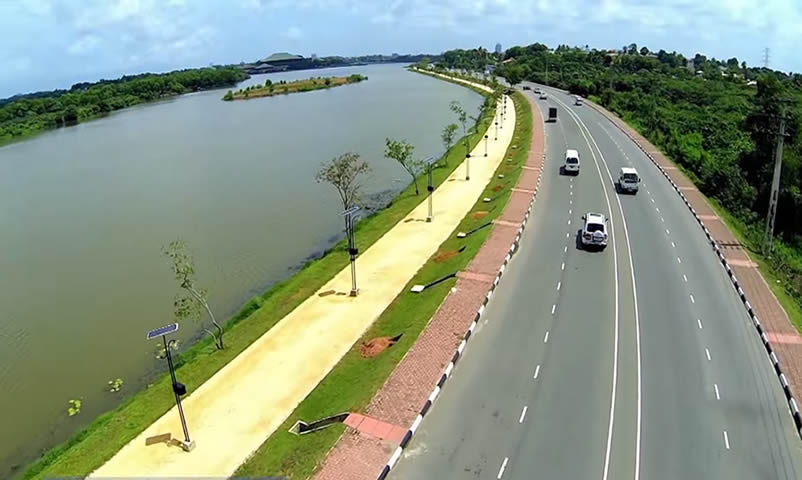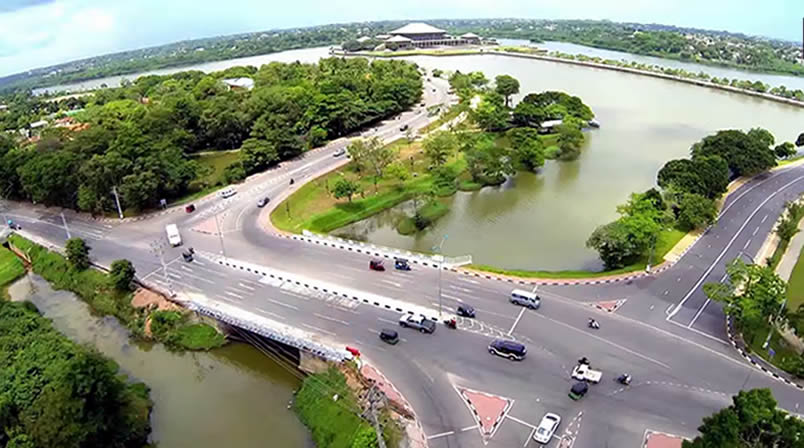Capital of Sri Lanka
The capital city of a country is the most important city for that nation, but in Sri Lanka’s case, it is a little bit different. Even though the capital is important, travellers hear very little about it and rarely visit the city. This silent capital is none other than Sri Jayawardena Pura, which hosts the parliament of Sri Lanka. Still, Colombo is the most popular city on the island, and whoever hears the country’s name, Sri Lanka or Ceylon, first thinks about the city of Colombo. For most people around the world, Colombo is the capital of Sri Lanka.
There had been many capital cities on the island, and the first capital of Sri Lanka was founded by King Pandukabhaya in the 3rd century BCE and named Anuradhapura. Later, Polonnaruwa, Dambadeniya Kurunegala, Yapahuwa, Kandy, Colombo, and Sri Jayawardena Pura succeeded as the capital of the island. Jayawardenapura is the last city to be named the capital of Sri Lanka, and it is the administrative centre of the island today.
The capital of Sri Lanka was shifted to Sri Jayawardenapura Kotte in the post-independent period. Jayawardenapura, otherwise known as Kotte, is the present capital of the island of Sri Lanka. But for most people, Colombo is still the capital, and Jayawardenapura is not known by most people in the world. It was declared the capital of Sri Lanka under the UNP government in 1979. It had been an underdeveloped area in the suburbs, and the rapid development started as soon as it was declared the capital city. Today, it has become a wealthy city with highly improved infrastructure and a well-maintained, beautiful environment.
This populated city is located in the suburb of Colombo and is inhabited by more than 134,114 people, representing all major ethnic groups. It had been one of the several capitals of the island in the past (1400–1565 AD).

The city was first constructed under the supervision of Alakeshwara. The family of Alakeshwara landed in Sri Lanka in the 13th century AD. They are believed to be of Malayalee origin, while some historians believe they came from south India. This prominent feudal family was a merchant family, and they were residing in Raigama near the port city of Beruwala. Historical evidence suggests that Alakeshwara had a close relationship with the rulers of Kotte and provided political and military leadership in mediaeval times. Vira Alakeshwara was a member of this family who established the city of Jayewardenepura. King Vira Alakeshwara was taken into custody by a Chinese admiral in 1411 AD and sent into exile to China, where he died.
The present location was selected for the city by Alakeshawara due to security reasons. It is strategically located between two rivers, namely the Diyawanna River and the Kolonnawa River, and the rivers are joined at one end of the city. Thereby, the borders of the city are formed by water from three directions, making it easy to monitor the invading army. Only the southern end of the city was open to the land. The city was invaded by rulers from northern Sri Lanka, but they failed to take control of the city due to the military power of the king and the landscape of the area, which was highly supportive of guerilla war tactics.
King Parakramabahu the 6th was able to bring the city under his control, and the city was chosen as the venue for his coronation in 1415 AD. The mighty king was able to bring the whole island under one crown, and he ruled the country from Kotte. After the demise of King Parakramabahu the 6th, the city gradually lost its importance as a prominent city. Due to the political unrest and economic downfall in the country during the reigns of King Buwanekabanu the 7th (1521–1557 AD) and King Dharmapala (1551–1597 AD) (the last two kings of the city), the city was deprived of its importance. Later, the Kotte kingdom was taken by the Portuguese, Dutch, and British, and Jayewardenepura was neglected for the following four centuries.
Jayewardenepura was an important city with a religious background, and it had played an important role in the revival of Buddhism. Groups of monks from Siam, Cambodia, and Burma arrived here in 1425 AD to obtain the Upasampada. The second group of monks arrived in 1476 AD from Burma and obtained the Upasampada from Vidyagama Thera of Kelaniya. Even today, several of the most important Buddhist temples are located in Jayewardenepura. Still, the population of the city is predominantly Buddhist, which is estimated to be more than 90%.
At present, Sri Jayawardenapura is a well-developed modern city with beautiful surroundings. The city harbours a large number of lakes, rivers, wetlands, and forest areas. This beautiful city is well planned and developed, keeping the balance between modernism and nature. However, the city is not included in most tour packages organised for foreign travellers because it does not provide important tourist attractions or shopping opportunities.






